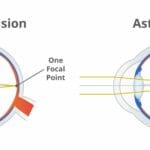Dealing with pain? Figuring out exactly what’s causing someone’s discomfort is crucial for effective treatment. This guide introduces PQRST, a simple yet powerful method for assessing pain. It’s a way to gather key information, going beyond a simple pain rating. By understanding each element of PQRST—Provoking/Palliating factors, Quality, Region/Radiation, Severity, and Time—you’ll be equipped to effectively assess and manage pain.
Decoding the PQRST Method
Understanding pain is like solving a mystery, and the PQRST method is our detective’s handbook. It helps unravel the complexities of a patient’s discomfort, providing valuable clues for diagnosis and treatment. This guide breaks down each component of PQRST, making it easier to use this powerful tool.
What Does PQRST Stand For?
PQRST is an acronym, with each letter representing a key question area: Provoking/Palliation, Quality, Region/Radiation, Severity, and Time. Let’s explore each element in detail. Sometimes, a “U” is added, standing for “You” – the patient and their unique experience.
P: Provoking/Palliation – Identifying Triggers
This step focuses on identifying what makes the pain better or worse. Does changing position, applying heat or cold, or taking medication make a difference? These questions can help pinpoint factors that either aggravate or alleviate the pain, offering insights into the underlying cause.
Q: Quality – Describing the Sensation
Pain can feel sharp, dull, burning, throbbing, aching, or even electric. Encourage patients to use descriptive words. The more detail, the better we understand the type of pain.
R: Region/Radiation – Locating the Pain
Where is the pain located? Does it stay put, or does it radiate to other areas? Understanding the pain’s boundaries can help identify affected nerves or underlying conditions.
S: Severity – Gauging Intensity
How bad is the pain? A pain scale (0-10) or visual aids (faces scale) helps gauge intensity. Remember, pain is subjective. What one person rates a “7” might be a “4” for another.
T: Time – Tracking the Pattern
When did the pain start? Is it constant or intermittent? Does it follow a pattern? Understanding the pain’s timeline—onset, duration, frequency—can provide crucial information.
U: You (The Patient’s Perspective) – The Human Element
This additional element emphasizes the patient’s holistic experience. How does the pain affect their daily life? Are they worried? Addressing these concerns builds trust and allows for a more patient-centered approach.
Why Use PQRST? Benefits and Applications
Benefits for Patients
- Clear Communication: PQRST equips patients with the language to articulate their pain experience effectively.
- Empowerment: Patients become active participants in their care, fostering a sense of control and collaboration.
- Personalized Care: Understanding the individual’s pain experience allows for tailoring treatment plans to specific needs.
Benefits for Healthcare Providers
- Comprehensive Assessment: PQRST provides a structured approach to gathering essential information about a patient’s pain.
- Improved Diagnosis: A thorough understanding of the pain’s characteristics aids in identifying the underlying cause.
- Targeted Treatment: PQRST guides the development of effective pain management strategies, leading to better outcomes.
- Efficient Documentation: It provides a standardized framework for recording pain assessments, ensuring consistency and facilitating communication among healthcare professionals.
PQRST in Practice
PQRST isn’t just a theoretical framework; it’s a practical tool used in diverse healthcare settings. In emergency rooms, PQRST aids in the rapid assessment of acute pain. In primary care, it’s valuable for managing chronic conditions. In specialized pain clinics, it forms the foundation of individualized treatment plans.
Imagine a patient experiencing back pain. PQRST helps determine if the pain is aggravated by movement, relieved by rest, described as a dull ache, localized in the lower back, rated a 5 out of 10, and present for several months. This information guides decisions about diagnostic tests, medication, physical therapy, and other interventions. Dive into the transformative power of moral reconation therapy for chronic pain management.
The Future of Pain Assessment with PQRST
While PQRST is invaluable, research is ongoing. Imagine wearable devices continuously monitoring pain, providing real-time data. Or artificial intelligence analyzing PQRST information to predict pain flares and suggest interventions. These advancements, combined with PQRST, could revolutionize pain management. Explore the fascinating world of arthrokinematics to understand joint movement and its relation to pain.
Conclusion: PQRST – A Powerful Tool
PQRST empowers healthcare professionals to better understand the multifaceted nature of pain. By mastering this technique, they can improve patient outcomes and build stronger therapeutic relationships. It’s not just about asking questions; it’s about listening to the patient and fostering open communication. While ongoing research suggests our understanding of pain continues to evolve, PQRST remains a cornerstone of effective pain assessment and management.
- Unveiling Bernhard Caesar Einstein’s Scientific Achievements: A Legacy in Engineering - July 15, 2025
- Uncover who is Jerry McSorley: CEO, Family Man, Business Success Story - July 15, 2025
- Discover Bernhard Caesar Einstein’s Scientific Contributions: Unveiling a Legacy Beyond Einstein - July 15, 2025
















1 thought on “Mastering PQRST: Your Essential Guide to Effective Pain Assessment”
Comments are closed.